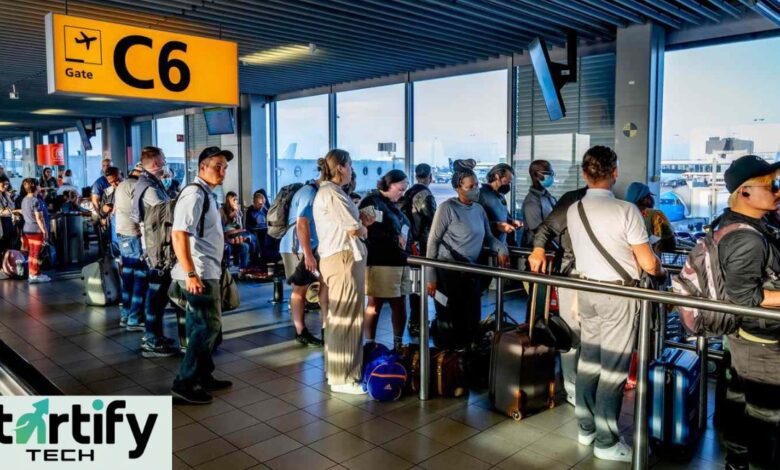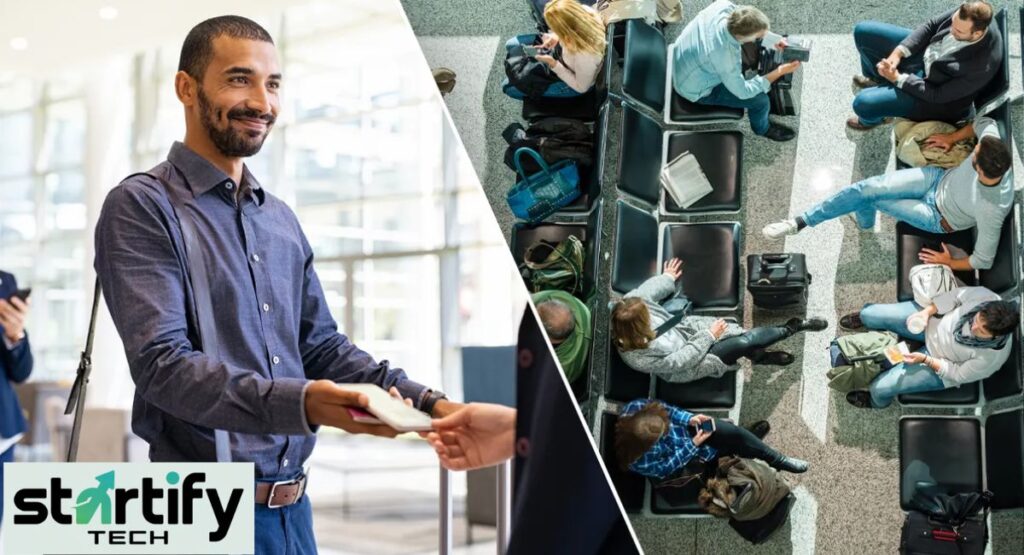What Is “Gate Lice”?

The term “gate lice” refers to passengers who crowd near the boarding gate well before their assigned zone is called. Think of it as queue‑jumping at gate lice its most social—waiting early in hopes of boarding sooner, often to secure overhead bin space.
Though originally coined by frequent‑flyer communities like FlyerTalk, “gate lice” have become a widespread annoyance for travelers and gate staff. This phenomenon has intensified post‑pandemic due to lingering anxiety, a desire for control, and stiff competition for overhead space.
2. Why Gate Lice Are a Problem
2.1 Congestion & Delays
Gate lice gather in tight clusters, blocking boarding bridges and stopping people with legitimate boarding rights from accessing the plane efficiently .
2.2 Bin Space Panic
Boarding early may help secure overhead space—especially after airlines began charging for checked bags—but it contributes to unnecessarily chaotic boarding.
2.3 Passenger Frustration
Travelers who wait their turn often find themselves delayed, with carry‑ons stashed far from their seats. Frustration brews when gate lice step ahead.
3. American Airlines’ Tech‑Driven Crackdown
3.1 What’s the New System?
Since late 2023, American Airlines began testing a boarding‑pass scan system at airports including Albuquerque (ABQ), Tucson (TUS), and D.C.’s Reagan National (DCA). When passengers try to scan early, an audible alert sounds and the pass is rejected, prompting gate agents to intervene.
3.2 Public Shaming: Audible Alerts
The audible alert serves two functions: flagging the jumper and deterring others. It’s a polite yet public reminder. Once the beep sounds, agents politely inform the passenger, “You are Group 5—please wait for your group to be called”
3.3 Why It Matters
Julie Rath, SVP of airport operations, said the airline has been pleased by the results. Passengers appreciate timely boarding, and gate lice behavior has seen measurable decline at pilot locations.
4. Real Reactions from Passengers & Staff

Passengers have expressed excitement over gate lice the crackdown. On Reddit, a traveler from ABQ wrote:
Was flying out of ABQ… saw several people get punted out of line… it was awesome”
Multiple users echoed this sentiment, insisting airlines need such technology to reinforce boarding fairness.
4.2 Flight Crew Relief
Flight attendants, like Brian Hoffman, describe gate lice as their pet peeve. They not only delay boarding but can physically block crew operations. Some suggest charging for carry‑ons could reduce the behavior.
4.3 Industry Support
Gate agents have welcomed the system—some workplaces even praise the audible warning as helpful in enforcing rules without confrontation .
Expert travel consultant Gary Leff and outlets like AFAR note the pilot system fulfills its goal: easing gate congestion and reclaiming order.
5. Broader Boarding Etiquette: Tips for Navigating Crowds
Even without tech intervention, here’s how travelers can help:
5.1 Know Your Zone
Pay attention to your boarding group and only approach the gate when called—this simple courtesy can prevent delays.
5.2 Consider Checked Bags
If securing overhead space is your main worry, it may save you stress to check a bag—even if carry‑on fees apply. Some suggest free checked luggage could help reduce gate crowding .
5.3 Support Equal Courtesy
Passengers should vocalize support for fair boarding. Calling out school for queue‑jumpers quietly or reinforcing staff instructions fosters community norms .
5.4 Airlines: Clear Communications Help
Airlines can help by designing boarding areas to minimize confusion—using lines, clear signage, and gate announcements to defuse crowding.
6. Competitors & Industry Response
- Delta Air Lines: Relies on numbered zone boarding instead of tech systems—but passengers still chase advantage.
- United Airlines: Uses “WILMA” boarding (Window, Middle, Aisle) plus standardized protocols—the fight for bins and line‑jumping continues
- Southwest: Offers open seating, making early lineups more fluid. Their carry‑on policy effectively reduces bin anxiety .
7. Future Outlook: Will It Expand?
7.1 AA Rollout Plans
American plans to broaden the program: more airports, increased agent training, and integration with app updates showing real‑time boarding statuses .
7.2 Industry Adoption
Other carriers are watching closely. If the program decongests gates and boosts punctuality, it might set an industry trend .
7.3 Traveler Culture Shift
Passengers appear to be aligning toward more respect for assigned zones—especially as social media and Reddit praise enforcement actions; peer pressure may drive more compliance .
9. Final Thoughts
“Gate lice” may seem like a trivial airline annoyance, but it’s emblematic of larger issues—anxiety in modern travel, competition for space, and the tension between order and entitlement. American Airlines’ technology marks a shift toward automated enforcement and smoother boarding processes.
Whether this becomes the standard across aviation depends on results: reduced boarding times, fewer delays, and happier travelers. For now, AA is leading the charge—and reclaiming boarding lanes from “gate lice” one beep at a time.



